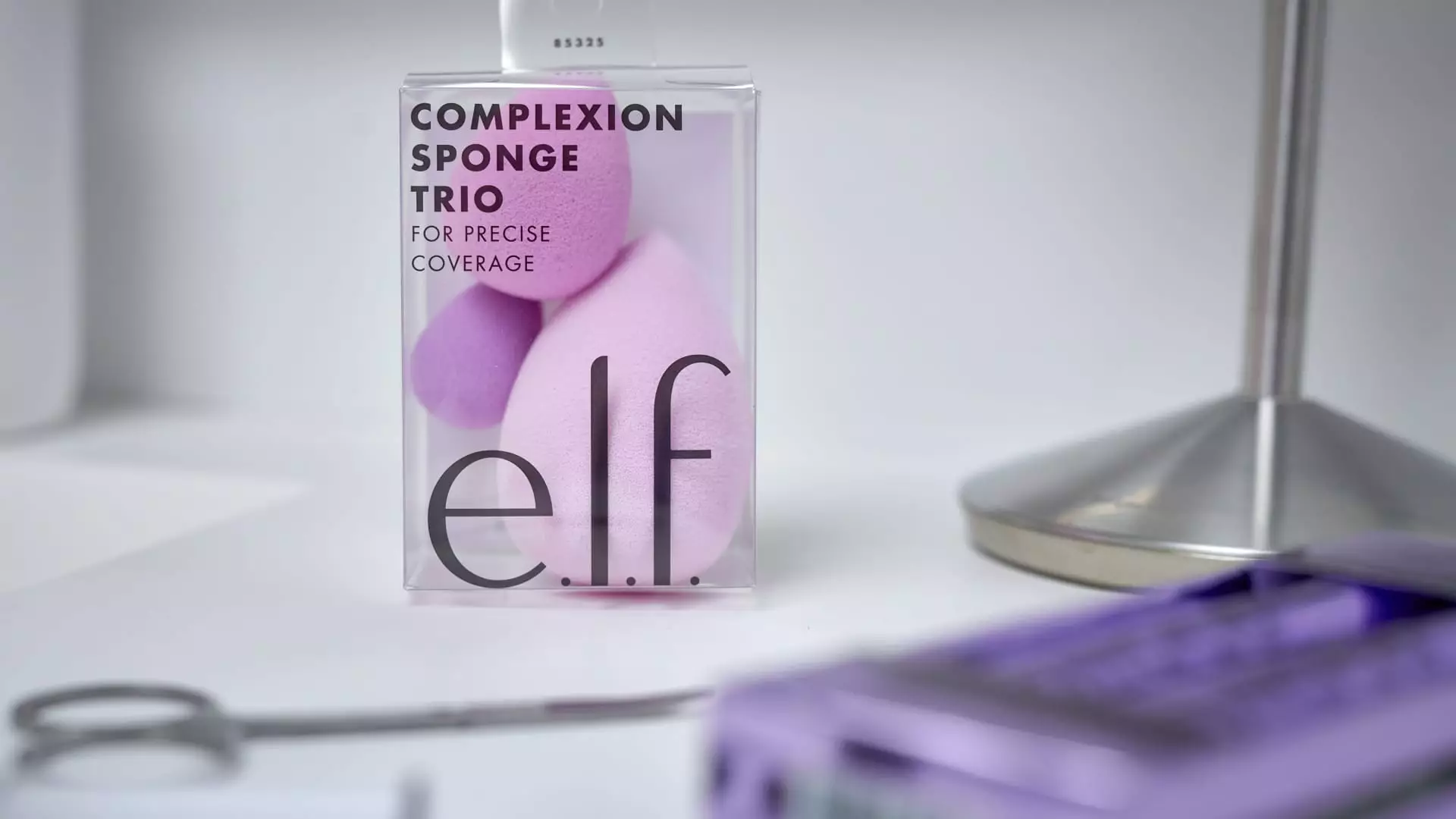E.l.f. Beauty, once celebrated as a leading force in the cosmetics industry, faced sobering news as it recently downgraded its full-year guidance. This shift comes in the wake of a significant 36% plummet in profits and disappointing sales trends observed in January. Historically one of the beauty sector’s standout performers, this downturn has sparked discussions about broader trends affecting both E.l.f. and the beauty industry at large.
The company reported a rather complex fiscal third quarter, with earnings that narrowly missed Wall Street projections despite holiday sales that exceeded expectations. The juxtaposition of high holiday sales against profit misses is not typical for a brand that has consistently managed to align its performance with market forecasts. Specifically, E.l.f. posted adjusted earnings of $0.74 per share, slightly below the anticipated $0.75. Revenue, however, showcased robust growth, hitting $355 million, a remarkable increase of about 31% from the $271 million reported a year earlier.
Notably, E.l.f.’s net income for the quarter fell to $17.3 million, translating to $0.30 per share, down from $26.9 million, or $0.46 per share, in the same quarter the previous year. This decline indicates not only a potential floundering in consumer confidence but also signifies the impact of rising production costs and competitive pressures that have begun to stretch the company’s profit margins.
The company’s modification of its anticipations for the full fiscal year places its expected sales between $1.3 billion and $1.31 billion, below the previously estimated $1.34 billion. Similarly, E.l.f. adjusted its earnings per share forecast to the range of $3.27 to $3.32, starkly under the initial prediction of $3.47 to $3.53. This substantial downward revision not only raises eyebrows but also invites speculation regarding the underlying factors contributing to this decline.
Based on trends from the first three quarters, the projected earnings per share for the current quarter could linger between $0.66 and $0.71—far below analyst expectations of $0.97. These shifts suggest that E.l.f. is grappling with challenges that could have lasting implications on its market strategy and investor sentiment.
In a recent interview, CEO Tarang Amin downplayed fears of internal turmoil, attributing the company’s struggles to an overall slowdown in the beauty category, particularly in mass cosmetics, which fell 5% in January. Amin highlighted two primary triggers for this decline: the aftermath of big holiday discounts and a noticeable drop in social media engagement surrounding beauty products. He mentioned specific social contextual factors, such as sensitivity around natural disasters and uncertainties regarding platforms like TikTok, which have historically fueled sales through influencer marketing.
This sobering perspective emphasizes that E.l.f. is not facing a uniquely internal crisis but is rather navigating through a tumultuous period for the entire industry. As beauty brands adjust to changing consumer behaviors and diminished online discourse, the ripple effects are unavoidable.
Compounding the brand’s difficulties are external economic forces, such as newly imposed tariffs against China, from which E.l.f. sources a substantial percentage of its products. Amin’s acknowledgment of these tariffs and their potential effects on pricing strategies indicates that the company is actively strategizing to mitigate risks. Given that approximately 80% of E.l.f.’s supply chain is rooted in this region, the implications of these developments could further challenge profitability.
While the company has previously thrived on its ability to deliver high-quality, affordable products that resonate with consumers, the looming uncertainty about costs and pricing could disrupt that delicate balance.
Despite these challenges, E.l.f. remains committed to investing in its future. Amin emphasized the importance of using current profits to enhance inventory management, infrastructure, and pursue international expansion. This ‘prudent’ approach reflects a long-term vision amidst short-term setbacks, allowing the company to recalibrate its strategies for sustained growth.
However, the decreasing pace of growth raises the question of whether E.l.f. can reclaim its previous momentum. As the brand continues to adapt, it will need to enhance its marketing efforts and product innovation to resonate with a changing consumer base, especially as the dialogue surrounding beauty evolves.
E.l.f. Beauty’s recent financial performance serves as a bellwether for the cosmetics industry, showcasing both internal and external pressures that could redefine the competitive landscape. While coping with profit declines and downward guidance presents immediate challenges, the actions taken by E.l.f. in this crucial period will determine its trajectory moving forward. The coming months will be pivotal as E.l.f. contemplates how best to navigate these turbulent times while striving to remain relevant in the ever-evolving beauty market.

